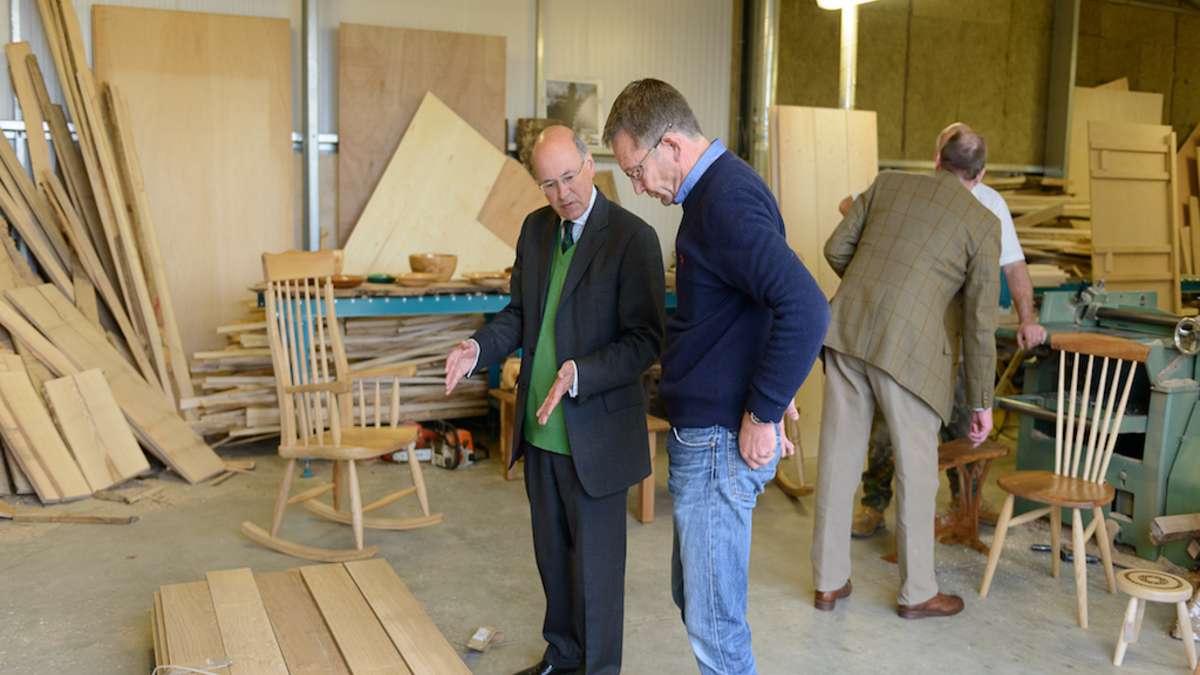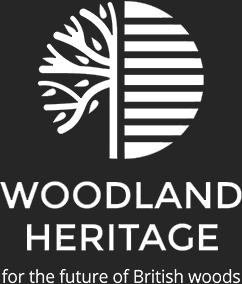
As part of Grown in Britain Week, Lord Gardiner of Kimble, Parliamentary Under Secretary of State for Rural Affairs and Guy Corbett Marshall, CEO of Woodland Heritage visited Sotterley Estate and Sawmills in Suffolk on Friday 13th October. Miles Barne, estate owner conducted a tour of the estates woodlands and Ben Sutton of Sutton Timber, operating here as a timber merchant, explained how the sawmill operates. Ben Sutton commented;- ‘Visits such as these not only explain and inform, but also raise the profile of our industry it was a pleasure to be part of.’
Topics for discussion also included acute oak decline disease, the method of silviculture and the 120 year cycle of oak production. First discovered over thirty years ago Acute Oak Decline (AOD) mainly affects native British oak trees. Affected trees have vertical sweeping fissures that seep a black fluid on the trunk. In the live tissue beneath the bleed a lesion is formed – this is a sign of tissue decay. Trees may die as soon as four to six years after being infected. A contributory factor to the cause of the lesions is thought to be bacterial infections associated with a native bark beetle.
Lord Gardiner was shown two young oak compartments near the start of the silviculture cycle. The new French system of silviculture is designed to reduce the length of an oak rotation. This was demonstrated with a four-year old compartment shared with an experimental crop of wild service to provide stand diversity. In the twenty-four-year-old compartment, oak ‘winners’ were pointed out, their canopies soon to be ‘halo thinned’ To complete the silvicultural cycle, Lord Gardiner viewed sixty ‘gun-barrel-straight’ oak logs that had been grown on the estate for 170 years and had been felled recently and presented for sale.
After visiting the woodlands Lord Gardiner met Ben Sutton at the sawmill, they discussed the connection of growing trees and saw milling. Ben showed the range of products Sutton Timber supplied, including boards from a variety of native hardwoods in a range of thicknesses, as well as a wide selection of flooring products. Lord Gardiner was also shown stacks of air dried timber and the kiln plant where timber is kiln dried on site. Part of the tour included visiting the relatively new joinery shop. Here timber is machined ready for sale for either solid flooring, joinery, or furniture. Tom Jones, Sutton Timber’s onsite machinist demonstrated preparing a wood floor, plus showed items of his stunning hand crafted furniture. Also on display were beautifully turned bowls made by Nick Shore.
It was a very enjoyable day affording us the opportunity to be able to ‘show off’ our products and talents. However, more importantly we were able to explain the processes of the timber industry. It also gave us the opportunity to raise awareness regarding the importance of maintaining healthy forest habitats and discuss the value of regulated management of woodland for the future security of our industry and the health of our trees.
Lord Gardiner commented: ‘I found the whole afternoon rewarding in knowledge and fascinating. It is exceptional to see these great stands of trees and an the same time see the wonderful and beautiful woodwork and materials for the craftsmen to produce their best work. To acknowledge Grown in Britain week with you all was most memorable and I was impressed with all I saw’.

